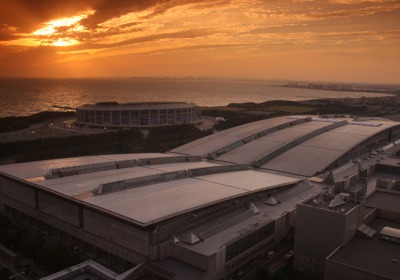The Tokyo motor show 2009 review, by Phil McNamara
Wed, 21 Oct 2009Ch–ch–ch–changes: time to face the strain, presciently sang David Bowie looking forward to the 41st Tokyo Motor Show. Since the 40th show in 2007, the car world has changed economically, politically and technologically. Even the show itself has suffered a pitiful transformation, stripped to just the Japanese firms after the European and American car makers block voted with their feet and jilted the show to save cash.
Two years ago, powerhouse Toyota had just overtaken GM to become the world’s largest car maker; this year, the Japanese firm is heading for a second annual loss projected around $5bn. There’s been change at the top, with Akio Toyoda becoming president of the family firm in June. And Toyota’s obvious show stars – Lexus’s LF-A supercar and Toyota’s FT-86 coupe – embody the new president’s very different objectives. ‘We must make cars that can be loved by car lovers,’ Toyoda told CAR Online.
He personally patronised the LF-A programme, racing the car at the Nürburgring circuit, and approving the 553bhp V10-powered supercar and the loss it will make, even at £325,000 a pop. And it’s no surprise that the FT-86 concept was unveiled on his watch. The rear-wheel drive coupe harks back to 1980s drift sensation, the E86 Corolla GT Coupe. The finished FT-86 is two years away, and we can only hope that the designers pepper the lithe, compact production car with fewer Nissan GT-R and 370Z design cues. But the spec is enticing: rear-drive, a high output four-cylinder boxer engine, six-speed manual gearbox and hopefully a price tag around £25,000. The FT-86 is a joint venture chassis with Subaru, which explains the low-lying flat four in a front/mid-engined position.
A few years back, Toyota served up 14 premieres; this year, the Japanese mustered 16 debuts between them. A handful solely deployed internal combustion engines (ICE) – the LF-A and FT-86, and the tiny Daihatsu ES hatch, which just trickles past 3m in length and can utilise a three-cylinder petrol engine thanks to its light 700kg weight. Yes, the melt away from ICE – the motor show trend for several years now – continued, with pure electric, fuel cell and hybrid the majority drivetrains by far.
That said, the Japanese are not unified on the next banker power source. Honda is the biggest advocate of hydrogen fuel cells, unsurprisingly as it has the Clarity on the road. ‘This is the ultimate form for all automobiles, as they emit no CO2, can travel long distances and can be quickly recharged,’ pronounced chairman Takanobu Ito. Not for Mitsubishi, which rolled out the electric i-Miev in both city car and van guises, and confirmed that 20% of its production would become pure EV (electric vehicle). That eclipses Nissan’s projection of 10% EV sales by 2020. Showman Carlos Ghosn, Renault-Nissan president, naturally served up the best soundbite: ‘In the face of real world challenges, Nissan is bringing real solutions. The time is now for zero emissions. Sustainable mobility is in our grasp.’
In contrast, Toyota is most vocally backing the plug-in hybrid, which will enhance the electric-only range of cars like the Prius, while having an ICE safety net to neutralise an EV’s range anxiety. Meanwhile, Suzuki showed that smaller cars could go green with a plug-in hybrid Swift and a fuel cell SX4.
Other hybrids included the plug-in PX-MiEV, a blatant hint at the next Outlander from Mitsubishi, the Fuga saloon (a Nissan version of the Infiniti M35 saloon), and Honda’s wedgy, wonderful CR-Z coupe. Could this car be a triumph of style over sportiness? Flooring the Insight hybrid – admittedly a car tuned for ecology – is a thrashy, gutless affair, and surely the torquey rush of an electric car is far more suitable for a green sports car than hybrid power? We’ll find out soon: Japanese CR-Z sales begin in February, with UK sales next summer.
Talking of sporty green cars, Carlos Ghosn also confirmed that the third of Nissan’s planned EVs is an Infiniti. ‘It’s a compact luxury car, a stylish, high performance four-seater with zero emissions.’ Expect it to take on Lexus’s forthcoming C-segment hybrid, previewed by the LF-Ch concept.
Finally, a Tokyo show wouldn’t be complete without some Japanese design curiousities. Nissan displayed the Land Glider, a tube-like EV which looks like a glider and leans like an Italian landmark while cornering. Daihatsu showed the Deca Deca van, which was clearly inspired by an afternoon looking at MFI wardrobes. But it’s Honda who deserves the design award: complementing the CR-Z were the ultraclean Skydeck, which made the MPV lustworthy, and the EV-N city car, Japan’s delicious riposte to Fiat’s retro 500.
That said, it was a downbeat press day, stripped of yesteryear’s buzz, imagination and multitude of fascinating metal. The recession has strangled the life out of the Tokyo Motor Show, and it would be no surprise if it ceases to exist and Shanghai and Beijing become Asia’s dominant auto shows. Ch-ch-ch-changes…
By Phil McNamara

